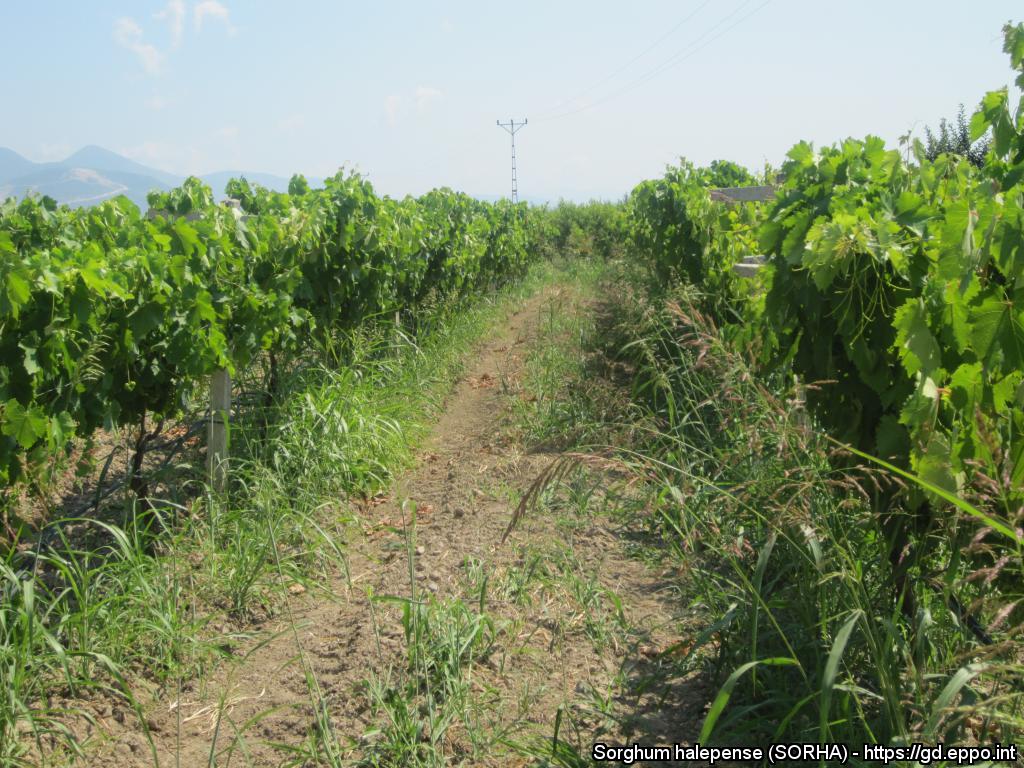When Nick Price noticed a strange weed on his McLaren Vale property, he didn’t think much of it. But the weed turned out to be Johnson grass – one of the world’s 10 most noxious weeds – and Nick has spent more than $20,000 over the last decade trying to get it under control.
“I initially saw Johnson grass in one section of the vineyard that’s in heavier soils, down in a gully,” Nick said.
“It was a section of the vineyard that was originally only machine pruned, and it hadn’t been redeveloped yet. We cut back the vines in that section of the block to retrain to a single cordon, and the following year I noticed the grassy weed seemed to be getting worse. At that stage, I didn’t even know what it was.”
Johnson grass was initially limited to about a dozen rows in Nick’s vineyard. Now the weed is establishing in multiple sections of the 16-hectare block.
“At the beginning we didn’t realise what a significant issue it was. We were treating it with glyphosate (Roundup), but you can’t spray too much of that around after budburst, which is about the time the perennial grass starts to shoot from a rhizome. We were then doing some manual control through undervine slashing and that seemed to be keeping it under control but not reducing it,” Nick said.
The weed was spreading.
“It appears that we have an incredibly massive seedbank in the soil. The seeds can last up to three years in the soil. Anything you do to disturb the soil will allow those seeds to quickly germinate,” Nick said. “The slasher probably spreads the seedbank, along with the wind. We’ve got a real battle on our hands.”
Nick is trying to control Johnson grass with a combination of slashing and chemical application – glyphosate (Roundup) prior to budburst and a mix of glufosinate-ammonium (Fascinate) and fluazifop-P (Fusilade Forte) in late spring/summer.
The chemical application alone is expensive – $350 per acre in 2021, as the herbicides are applied multiple times a season and at a high rate of coverage, and Nick has found the sprays aren’t a permanent eradication solution.
“We’ve had varying degrees of success and we’re still figuring it out. We’re rethinking the strategy and we’re going to hit it a lot earlier this year,” Nick said.
“I’ve found it hard to get information about controlling this weed in South Australia, particularly in a viticultural setting where irrigation practices are utilised. This is a perennial weed that needs moisture during the spring and summer, which is the same as our growing season for winegrapes.”
If Nick allows Johnson grass to grow, it shoots as high as 2m through the vine canopy and fruiting zone. Some winemakers claim they can taste it in the wine. The weed out-competes vines for soil moisture and Nick thinks it has the potential to reduce grape yields by as much as 30%.
“It’s a big issue for us. And I hope it doesn’t end up being an issue for others in the region. It’s a weed that spreads so easily, so I hope people are practicing good farm-gate hygiene and keeping an eye out for it,” Nick said.
Johnson grass (Sorghum halepense) also known as Aleppo Grass and Evergreen Millet, is known as a destructive global weed and is considered one of the top 10 most noxious weeds.
It’s classified as an Undeclared Plant in South Australia. This means that there is no current legal framework for controlling its movement or the need to notify PIRSA when an infestation is detected.
It was introduced into South Australia as a pasture grass in around 1870 but has been reported as a weed in irrigated horticultural situations.
Johnson Grass is a summer growing, erect, clumping perennial sorghum which grows up to two metres high. It’s common along waterways and roadsides and in paddocks and crops where water is abundant during summer.
Do you know which weeds are Declared in South Australia? Refer to this poster: https://cdn.environment.sa.gov.au/landscape/docs/ki/pirsa-declared-plants-sa-bro.pdf
